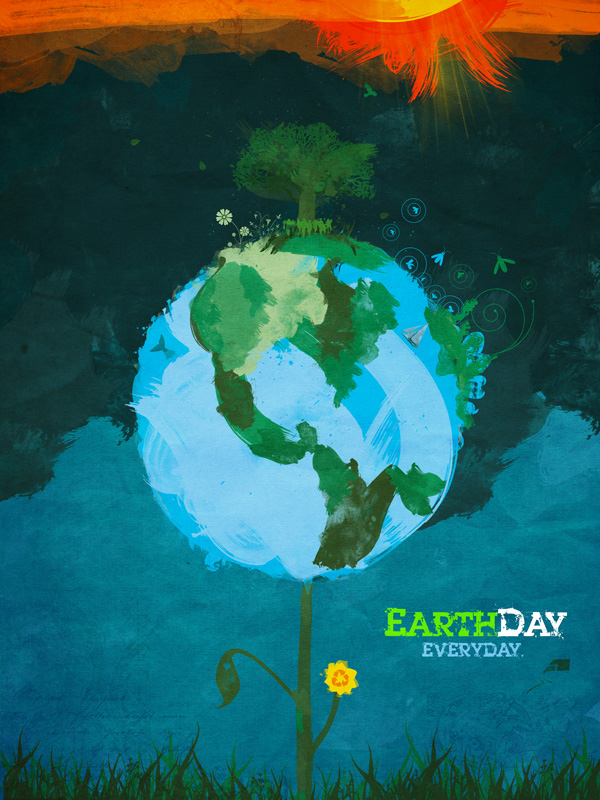Expanding Energy Access While Reducing GHG Emissions

On Earth Day 2020, more than 5,000 environmental groups from 184 countries, representing hundreds of millions of citizens around the world, sent a message to global leaders that they wanted quick and decisive action on global warming and clean energy.
Since then, Earth Day has picked up momentum, and has grown to the world’s largest secular observance – with more than a billion people marking it last year. In those same 20 years, however, annual global emissions have continued to rise, from 25.11b tons in 2020 to 36.4b tons in 2019. Even the temporary dip in emissions in 2020 due to lockdowns triggered by COVID-19 wasn’t enough to impact the atmospheric concentrations of greenhouse gases, according to the latest report from the UN’s World Meteorological Organization — and the effects of a warming planet become ever-more tangible through hurricanes and droughts, floods and wildfires.
More than 10% of these total global emissions derive from residential energy use, primarily for electricity and heating. At the same time, 789 million people world-wide continue to live without any access to electricity – the vast majority of whom are in sub- Saharan Africa. This lack of energy not only severely curtails educational and economic opportunities, and quality of life – but also makes those living without electricity more vulnerable to the negative impacts of climate change. While Africa is responsible for only 3.7% of CO2 emissions, many argue the continent will be the hardest hit by climate change, in the form of droughts, heat waves, and potential crop failures – just to name a few.
Lighting Global’s Approach
In line with the World Bank Group’s Climate Action Plan 2021- 25, our work benefits climate mitigation – both by reducing GHG emissions, and by enabling users to better adapt to the negative impacts of climate change. By displacing the use of kerosene lamps and similar fuel-based lighting sources, the use of off-grid products meeting Lighting Global / VeraSol Quality Standards has already avoided an estimated 44.5 million tons of CO2e emissions since 2009. This is the emissions equivalent of taking more than 9.6 million cars off the road for a year. As we continue to move further up the technology ladder, enabling access to appliances that support productive uses leveraging solar energy (PULSE), such as irrigation, grain milling, refrigeration, and more, the displacement impact will grow, as the use of diesel generators can also be reduced or replaced through PULSE.
These same off-grid solar products which enable users to avoid using polluting energy sources, can also be applied to reduce some of the impacts of a warming planet. Off-grid solar can power fans to keep an indoor environment cool, or enable refrigeration to slow food spoilage and store vaccines and other medications. As droughts become more common, the need for irrigation to prevent crop failure becomes more essential, with solar water pumps able to play an important role. In the aftermath of climate (as well as other human-made) disasters such as hurricanes, off-grid energy can also be rapidly deployed to support the recovery period providing lighting and enabling communications.
Looking Forward
Our program’s goal is to enable access for 600 million people to Tier 1+ access by 2030 through off-grid solar products, allowing users to expand their opportunities and abilities to live well even on a warming planet, while continuing to displace harmful emissions.
At the same time, we are seeking to address the unintended negative environmental consequences from the e-waste of the solar lights and solar home systems that have already reached their end-of-life — an estimated 26.2 million of them in sub-Saharan Africa and South Asia alone. Safe disposal of these products can be challenging as they often contain toxic metals and hazardous chemicals and as off-grid solar and electronic appliance markets grow, it is expected that more and more governments will adopt e-waste policies. To support in this endeavor, we are recruiting a firm to develop an Off-Grid Solar E-Waste Management Toolkit to assist World Bank project teams and counterpart governments assess the environmental risk in off-gird solar projects and develop appropriate environmental and social framework (ESF)/safeguard instruments and policies.
Read more about this Toolkit and our environmental work and impact:
- eConsult: Off-Grid Solar E-Waste Management (EWM) Toolkit
- IFC-World Bank Study Establishes Significant Climate Benefit of Solar Lighting Products
- Our Impact, Lighting Global
- Our Impact, Lighting Africa
- Keeping the Light | A Letter from Itotia Njagi
减少温室气体排放,提升能源可及性
 2020年“世界地球日”这天,来自全球184个国家的5000多家环保组织,代表全球亿万公民,呼吁各国领导人针对全球气候变暖及清洁能源采取迅速果断的行动。
2020年“世界地球日”这天,来自全球184个国家的5000多家环保组织,代表全球亿万公民,呼吁各国领导人针对全球气候变暖及清洁能源采取迅速果断的行动。
自此,“世界地球日”呈现积极发展势头,成为世界最大的仪式活动——全球超过10亿的民众在去年参加了这个活动。然而,20年来,全球温室气体排放量持续上升,以2020年和2019年两年为例,分别达到251.1亿吨和364亿吨。根据联合国世界气象组织发布的最新报告,2020年虽因新冠疫情封城导致排放短暂下降,但这一变化对大气温室气体浓度的影响并不明显。地球变暖的影响进而更为显著,飓风、干旱、洪水和山火等灾害频繁发生。
在温室气体的排放总量中,超过10%来自住宅能源消耗,主要包括电力和供暖。同时,全球仍有7.89亿人口生活在无电的环境中,他们当中绝大部分人口居住在非洲撒哈拉以南地区。能源短缺不仅严重阻碍了教育和经济的发展,以及生活质量的提升,也致使缺电地区人口的生活暴露在日益严重的气候变化的负面影响,变得更加脆弱。尽管非洲的二氧化碳排放量仅占3.7%,但很多人认为,非洲大陆将会成为受气候影响最严重的地区,干旱、热浪,以及潜在的农作物歉收等等,仅举几例便可见一斑。
点亮全球的做法
依照世界银行集团的《气候变化行动计划》(2021-2025年),我们的工作有利于减缓气候变化——既可减少温室气体排放,又能帮助用户更好地应对气候变化带来的负面影响。自2009年以来,通过使用符合点亮全球 / VeraSol 质量标准的离网产品替代煤油灯及类似的燃料灯,减少了约4450万吨二氧化碳的排放,相当于路上行驶960多万辆汽车一年的排放量总和。在我们持续推动技术升级,提升例如灌溉、粮食加工、冷藏等生产用太阳能设备使用的同时。我们将持续加大太阳能替换力度,如减少柴油发电机的使用,或替换为生产用太阳能设备。
这些离网太阳能产品可以助力用户摆脱污染性能源的使用,一定程度上减少全球大气变暖的影响。离网太阳能可给风扇供电,使室内环境保持凉爽,或提供制冷,用于食物保鲜、疫苗和其他药物的冷藏存储等。由于干旱越来越频繁地发生,灌溉农田,防止作物歉收变得尤为重要,太阳能水泵能够为此发挥重要的作用。面对气候变化(以及人为造成的)灾难,如飓风等,离网能源也能迅速部署,投入使用,支持恢复期的照明,使通讯畅通无阻。
展望未来
我们的项目目标是,到2030年,使全球6亿人口能够接入能源阶梯一级以上(Tier 1+)的离网太阳能产品,即使在全球气候变暖的环境下,也能有机会和能力创造美好的生活,同时不断减少有害排放。
与此同时,我们将继续寻求解决之道,消除报废的太阳能灯及太阳能家用系统所产生的电子垃圾造成的负面环境后果——据估测仅在非洲撒哈拉以南和南亚地区就有262万吨这样的电子垃圾需要处理。如何安全处理这些产品是一大挑战,因为这类产品通常含有有毒金属和有害化学物质,随着离网太阳能电器市场的增长,可以预见,越来越多的政府将采纳电子垃圾政策。为支持这方面的努力,我们正在招募开发离网电子垃圾管理工具软件包的企业,以支持世界银行项目团队以及对口政府对离网太阳能项目的环境风险进行评估,并制订适当的环境及社会架构(ESF)/ 安全保障工具及政策。
有关该工具软件包及我们环境工作和影响力的更多内容,请参考以下链接:

